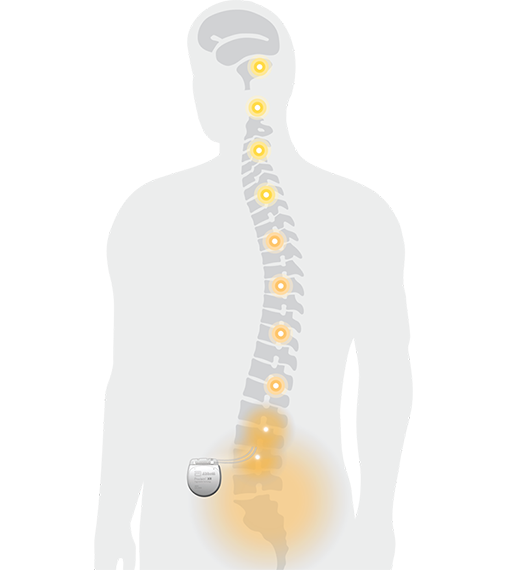
SPINAL CORD STIMULATION (SCS):
Spinal Cord Stimulation (SCS) represents one of the most advanced techniques in the field of Pain Management. SCS is used when nonsurgical and/or surgical options have failed to provide sufficient relief from pain. SCS requires two separate procedures, a “Trial” procedure, and a “Permanent Implant” procedure. For the “Trial” procedure, two thin electrodes are placed into the epidural space, close to the nerves transmitting pain signals. The “Trial” procedure is done in one of our clinics and takes 20-30 minutes to perform; when temporary electrodes have been placed, patients try out the effectiveness of the device from the comfort of their home for a period of 5-7 days. If patients find the device helpful and are satisfied with the result of the “Trial”, then a consultation with a neurosurgeon is arranged to discuss a “Permanent Implant” placement.
Spinal Cord Stimulation is an extremely effective way of managing chronic pain. When chronic pain is well managed, patients usually experience improvement in their overall quality of life and sleep. Many patients are also able to reduce the need for pain medications. Please, visit www.abbott.com/consumer/neuromodulation.html to learn more about this pain management technology.
Conditions Treated:
Spinal Cord Stimulation is commonly recommended for patients with the following conditions:

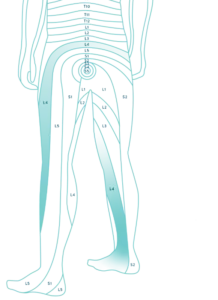
DORSAL ROOT GANGLION STIMULATION (DRG):
Dorsal Root Ganglion Stimulation (DRG), along with Spinal Cord Stimulation (SCS), also represents one of the most advanced techniques in the field of Pain Management. Most of the concepts applicable to the SCS are also true for the DRG. The major difference is that “Trial” and “Permanent Implant” leads are positioned along the individual nerves branching out from the spinal cord rather than the spinal cord itself. Lead positioning along individual nerves allows for very targeted pain relief. Please, visit www.abbott.com/consumer/neuromodulation.html to learn more about this pain management technology.
Conditions Treated:
Dorsal Root Ganglion Stimulation is commonly recommended for patients with the following conditions:
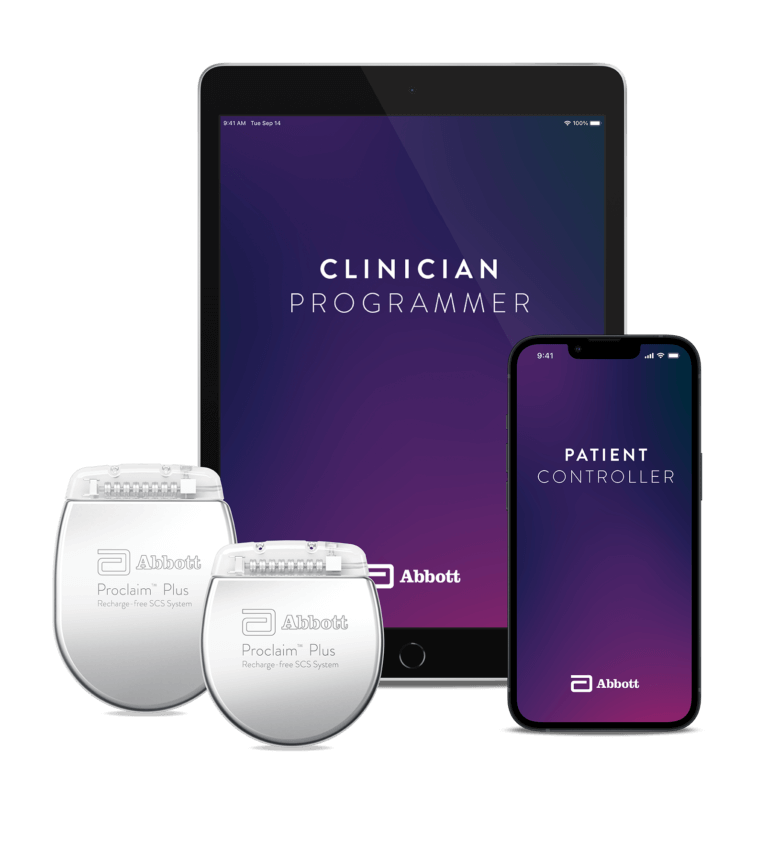
What to Expect:
Spinal Cord Stimulation and Dorsal Root Ganglion Stimulation: “Trial” procedure length 20-30min. Patients start experiencing significant pain relief almost immediately following the procedure. Please note that if IV sedation is requested, the patient would need to bring a driver with them on the day of the procedure. Please call us at (912) 910-3777 or send us a web inquiry if you have additional questions about this procedure and how it can benefit you.
Description:
Posterolateral Lumbar Fusion is a surgical technique to fuse together the painful vertebrae; when painful vertebrae stop moving, the pain lessens/stops as well. Posterolateral Lumbar Fusion provides spine stability and pain relief by lifting pressure off the nerves. This procedure can be done at any level in the middle and lower back and is very effective at alleviating back and leg pain.
Conditions Treated:
Posterolateral Lumbar Fusion is commonly recommended for patients with the following conditions:

What to Expect:
Procedure length: <45min. Patients start experiencing significant pain relief almost immediately. Minimal postoperative discomfort. Please note that this procedure is done at the hospital and under general anesthesia.
Description:
Kyphoplasty is a minimally invasive procedure to stop the pain caused by spinal compression fractures, which usually occur because of conditions such as osteoporosis and trauma. During the Kyphoplasty procedure, a small balloon is navigated into the fractured vertebra. Once in position, the balloon is inflated to create a void within the bone. The void is then filled with bone cement, stabilizing the fracture and alleviating pain. This process not only restores vertebral height but also enhances overall spine alignment. Most patients experience very quick back pain relief following the procedure.
Conditions Treated:
Kyphoplasty is commonly recommended for patients suffering from vertebral compression fractures. Vertebral compression fractures are usually caused by:
What to Expect:
Procedure length: <45min. Patients start experiencing significant pain relief almost immediately. Minimal postoperative discomfort. Please note that if IV sedation is requested, the patient would need to bring a driver with them on the day of the procedure. Please call us at (912) 910-3777 or send us a web inquiry if you have additional questions about this procedure and how it can benefit you.
Description:
Facet Joint Blocks are minimally invasive and highly effective in alleviating pain arising from arthritis and wear down of the spine. This procedure involves the injection of a long-lasting anesthetic into the facet joints in the neck, middle back, and lower back. Facet Joint Blocks serve as an effective diagnostic tool to precisely identify areas of the spine that cause pain. If Facet Joint Blocks provide significant short-term pain relief, then Radiofrequency Nerve Ablation will be recommended. Radiofrequency Nerve Ablation desensitizes small areas of the nerve tissue using an electrical current, which stops the transmission of painful signals.
Conditions Treated:
Facet Joint Blocks and Radiofrequency Nerve Ablation are commonly recommended for patients with the following conditions:
What to Expect:
Facet Joint Blocks: procedure length: <5min. Patients start experiencing significant pain relief almost immediately. The expected duration of pain relief is several days. Radiofrequency Nerve Ablation: procedure length: <10min. Patients start experiencing significant pain relief within 2 weeks following the procedure. The expected duration of pain relief is 12 months. If requested by the patient, this procedure can be done with IV sedation. Please note that if IV sedation is requested, the patient would need to bring a driver with them on the day of the procedure.
Description:
Epidural Steroid Injections are minimally invasive and highly effective in alleviating pain and inflammation associated with various spinal conditions. This procedure involves the injection of a corticosteroid medication and a local anesthetic directly into the epidural space surrounding the spinal nerves. Epidural Steroid Injections can provide targeted relief for patients experiencing pain in the neck, back, arms, and legs.
Conditions Treated:
Epidural Steroid Injections are commonly recommended for patients with the following conditions:
What to Expect:
Procedure length: <5min. Patients start experiencing significant pain relief within 2-3 days following the injection. The expected duration of pain relief is 3 to 6 months. Make sure to mention to your physician if you are taking a blood thinner, as some (but not all) Epidural Steroid Injections would require you to hold your blood thinner for a few days before the procedure. If requested by the patient, this procedure can be done with IV sedation. Please note that if IV sedation is requested, the patient would need to bring a driver with them on the day of the procedure
Description:
Trigger Point Injections are designed to reduce pain associated with painful trigger points and tight and overworked muscles. Painful muscles can be present in various areas but are usually found in the neck, middle, and lower back. Frequently, more than one Trigger Point Injection is needed to achieve durable pain relief from muscle pain and tightness, as well as improved flexibility.
Conditions Treated:
Trigger Point Injections are commonly recommended for patients with the following conditions:
What to Expect:
Procedure length: <2min. Patients start experiencing significant pain relief within 2-3 days following the procedure. The expected duration of pain relief is several months.
Description:
Electromyography (EMG) and Nerve Conduction Study (NCS) is the study of muscles and nerves. EMG measures how well your muscles respond to the signals coming from the brain. NCS measures how well signals from the brain travel throughout the nervous system and whether a nerve has been damaged. In combination, these two tests provide a lot of useful information to your physician, whether diagnosing a problem or deciding on the best treatment plan.
Electromyography and Nerve Conduction Study is a very useful diagnostic tool during the following conditions:
What to Expect:
Procedure length: 30-60min. Minimal post-procedure discomfort.


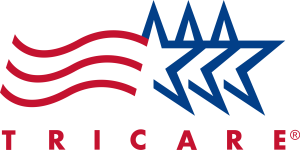




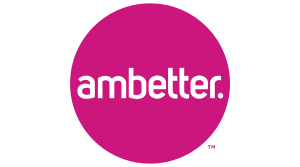



State-of-the-art equipment, evidence-based practices, and a comprehensive treatment approach to help you get better.
Our physicians are fellowship-trained and are ready to provide all patients with compassionate, empathic, and safe care.
We collaborate closely with local surgeons, physical therapists, and mental health counselors to expedite your recovery.
8:00 a.m. to 5:00 p.m.
Closed weekends & holidays